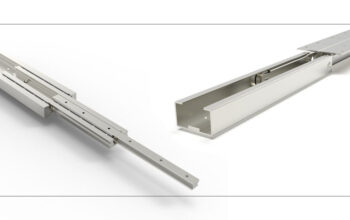Information technology (IT) sector is an important driver for the contemporary economy. From enabling daily communication to strengthening complex business processes, technology has been quickly integrated as the world works. For investors interested in a view over the long run, IT sector stocks offer an area with high growth potential—provided that it is approached logically.
This article explores the key segments within the sector, explains what makes these stocks unique, and outlines the main points to consider before investing.
Why the IT sector deserves attention
Today, it is hard to envision a government or business system operating without some kind of digital assistance. The majority of industries rely on technology for everything from data management and workflow automation to real-time communication—making IT sector stocks increasingly relevant for investors observing this digital transformation.
The scale of the sector is immense. As of 2024, the combined market capitalisation of listed technology companies in the United States stood at over Rs. 1,200 lakh crore. That figure alone demonstrates just how critical and valuable this sector has become—not only to investors but also to the global economy.
Key components of the IT sector
Technology covers a broad range of industries, and it helps to understand how this space is structured before exploring stocks for investment.
Software and services
These firms create operating systems, business applications, and cloud-based systems. They assist in automating everything from accounting programs to customer service. Most provide subscription-based offerings, so their revenues are comparatively stable.
Technology hardware and equipment
This segment includes firms that manufacture devices such as laptops, servers, and networking tools. These are the physical components that make data flow and storage possible.
Semiconductors and equipment
The semiconductor is the brain behind all modern electronics. They are important for smartphones, servers, vehicles and even smart home units. As the demand for artificial intelligence and machine learning increases, this site attracts the attention of the growing investor.Consumer electronics and communication tools
Consumer electronics and communication tools
Examples of these are smartphones, routers, and wearable technology. The segment serves both individual and corporate requirements, frequently flirting with the convenience vs. infrastructure divide.
The IT segment keeps growing. Newer fields like quantum computing, immersive digital experience, and advanced robotics are slowly forging their niche in this sector.
What makes IT sector stocks different
Investing in technology is not the same as putting money into consumer goods or industrials. The characteristics of the IT sector demand a different approach.
- Fast growth cycle: Many successful technical companies are growing rapidly by offering new, sought -after solutions. However, this can make them more weak for market change.
- High levels of uncertainty: The same pace that creates opportunity also increases risk. One breakthrough can change the competitive landscape overnight.
- Premium pricing: They tend to trade at higher prices, including higher price-to-earnings ratios. Investors are willing to pay a premium for stocks that hold out hope of future returns—but that leaves less room for error.
How to assess IT sector stocks
Knowing a company’s finances is essential, but for IT stocks, that is merely the beginning. Investors need to look at a combination of balance sheet information, strategic focus, and developments within an industry.
Evaluating liquidity
Young tech firms may take years before they start generating profits. In such cases, knowing how much cash the company has on hand, and how long that will last, can give an idea of whether it can sustain operations. Ratios like the current ratio or even regular cash flow updates help here.
Debt and capital structure
Not all debt is bad—some companies borrow to fund expansion or research. The key is to check whether the debt levels are reasonable compared to the company’s assets and future income prospects.
Future guidance and transparency
The report on income reports part of the story. What does the management mean for future performance as well. Are they vigilant, realistic or very optimistic? Investors can provide insight into this through presentations and summaries of conference calls.Wider market developments
Wider market developments
Although a company is strong, changes in the area can affect it. For example, sudden demand for data processing with high demstration can benefit good tile producers. Keeping the update on new technologies and regulation helps to worry about these changes.
Long -lasting investment and selection between trade
The approach to technology shares often comes in two wide trails with a long -term view, or trade based on short -term movements.
- Long -term investors, are looking for companies with a strong basis, reliable management and durable business models. They are willing to keep through instability for the possibility of future returns.
- Short-term traders, on the other hand, focus on timing. They track news, earnings updates, and price patterns to make quick decisions.
Both strategies have their place, but clarity on goals is important before deciding which route to take.
Trends likely to influence the sector
Several developments are expected to play a key role in shaping the IT sector over the next decade:
Many developments are expected to play an important role in shaping the IT sector over the next decade:
- Artificial intelligence and automation: These techniques are adopted in industries to improve productivity and decision.
- Cloud infrastructure: As more organisations shift operations online, demand for secure, scalable cloud solutions is growing rapidly.
- Cybersecurity: With increased reliance on digital systems comes the need for robust security. Firms offering protective technologies are seeing strong interest.
- Advanced data processing: Technologies such as Edge Computing and Quantum Computing are still in the early stages, but can open new opportunities in processing and data management.
Firms that are building the tools or enabling these trends may be well positioned for future growth.
Steps to begin investing
If you are looking to invest in IT sector stocks, Opening Demat account is the first step. This account allows you to hold shares in electronic form and buy or sell them through your broker.
Explore companies listed on NSE or BSE, understand their business models and read about the recent announcements. Note if the company’s products have been combined with long -term trends in the industry.
Conclusion
Technology is deeply woven into daily life and global trade materials. It’s no longer about software or hardware – it’s about how the world combines, teaches, works and develops. Stocks in the IT sector provide a way of participating in this ongoing development, provided that investment decisions have been informed and deliberately taken.
While the sector can come up with uncertainty and a duration of sharp market reactions, its long -term capacity remains strong. With the right approach supported by research and patience, investors can create meaningful risk to this dynamic part of the market. Starting with a free Demet account is a good first step toward participating in the future of technology.




